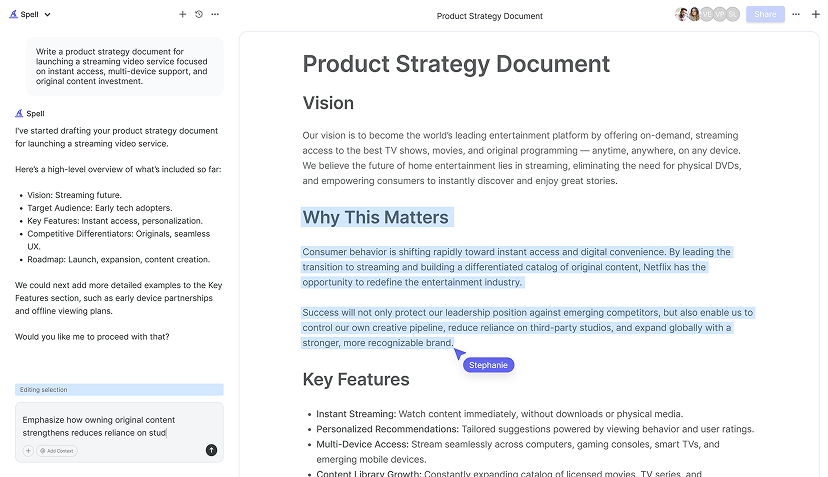Writing a 10-page paper doesn't have to be a marathon of stress and caffeine. It can be a structured, almost rewarding process if you break it down into manageable pieces. In this guide, I'll walk you through everything from choosing your topic to polishing your final draft. Whether you're in college or tackling a professional report, these steps will help you get from idea to finished paper efficiently and effectively.
Choosing the Right Topic
Picking a topic is like choosing the right pair of shoes for a hike. It needs to fit well and be comfortable for the journey ahead. When selecting your topic, aim for something that genuinely interests you. This can make the research and writing process less of a chore and more of an exploration. Let's say you're writing about environmental science. Instead of a broad topic like "climate change," focus it down to "the impact of climate change on polar bear habitats." This narrower focus will make your research more manageable and your paper more engaging.
Here's how you can zero in on a suitable topic:
- Interest and Passion: Choose something that you find intriguing. It's much easier to write about a subject you care about.
- Research Availability: Make sure there are enough credible sources available. A quick database search can confirm this.
- Scope: Ensure the topic is neither too broad nor too narrow. A too-broad topic might make your paper unfocused, while a too-narrow topic might not fill the page requirement.
Once your topic is set, you're ready to dive deeper into the research phase.
Conducting Thorough Research
Think of research as the treasure hunt of writing. The more thorough your hunt, the richer your paper will be. Start by gathering a variety of sources. Scholarly articles, books, and reputable websites are all fair game. Avoid sources that lack credibility, like random blogs or non-peer-reviewed articles.
As you sift through materials, take detailed notes and organize them by themes or subtopics. This will help you structure your paper later. Here's a quick example of how your notes might look:
Theme: Impact on Polar Bears
- Source: Smith et al. (2020) - Decline in sea ice affects hunting patterns.
- Source: Johnson (2019) - Bears are moving inland, affecting local ecosystems.
Using tools like Zotero or EndNote can be incredibly helpful for managing your citations and references. And if you're tired of juggling between different tools, you might want to try Spell for a more streamlined research and writing process, allowing you to keep everything organized in one place.
Crafting a Solid Thesis Statement
Your thesis statement is the backbone of your paper. It's the point you're trying to make, the argument you're setting out to prove. A strong thesis statement is clear, concise, and debatable. It should make your reader think, "Interesting, I want to know more!"
Here‘s a simple formula you can follow:
Although [counterargument], [main argument] because [reason 1], [reason 2], and [reason 3].
For example: "Although some argue that climate change has little effect on polar bears, it significantly impacts their hunting grounds, alters their migration patterns, and threatens their survival due to habitat loss."
Remember, your thesis statement sets the tone for the rest of your paper. It will guide your research and structure, so take the time to get it right.

Organizing Your Paper
Once you have your thesis statement, it's time to outline your paper. Outlining is like sketching a blueprint before building a house. It helps ensure that your ideas are logically organized and that you have a clear path forward.
Here‘s a basic outline to get you started:
- Introduction: Start with a hook, provide background information, and state your thesis.
- Body Paragraphs: Each paragraph should focus on a single point that supports your thesis. Begin with a topic sentence, followed by evidence and analysis.
- Conclusion: Restate your thesis in a new way, summarize your main points, and finish with a closing thought or call to action.
Creating a detailed outline will help you see the big picture and keep your writing on track.
Writing the Introduction
The introduction is your chance to grab the reader's attention. Start with something engaging-a surprising fact, a quote, or a question. Then, provide some background to set the context for your thesis statement. Think of it as setting the stage for the reader.
Here‘s a sample introduction for our polar bear paper:
Did you know that polar bears may not survive the next century if current climate trends continue? As the Arctic ice melts at alarming rates, polar bears face unprecedented challenges. This paper will explore how climate change is affecting their hunting grounds, altering their migration patterns, and threatening their survival.
Remember, the introduction is your first impression. Make it count!
Developing Body Paragraphs
The body of your paper is where the magic happens. Each paragraph should focus on a single idea that supports your thesis. A well-structured paragraph includes a topic sentence, evidence, explanation, and a transition to the next point.
Let‘s break down a sample paragraph:
Topic Sentence: Climate change is shrinking polar bears' hunting grounds, making it increasingly difficult for them to find food.
Evidence: According to Smith et al. (2020), the extent of sea ice has diminished by 40% over the past decade.
Explanation: This reduction forces polar bears to swim longer distances, expending more energy and reducing their chances of catching prey.
Transition: As their hunting grounds diminish, polar bears are also forced to alter their migration patterns.
Avoid cramming too many ideas into one paragraph. Keep it focused, and use transitions to maintain a logical flow from one point to another.

Writing a Compelling Conclusion
Your conclusion should pull everything together and reinforce your thesis. Begin by restating your thesis in a new way, then summarize your main points. Finally, leave the reader with a closing thought, question, or call to action. It's your last chance to make an impression, so make it impactful.
Here‘s a sample conclusion for our polar bear paper:
In conclusion, climate change poses a dire threat to polar bears by shrinking their hunting grounds, altering their migration patterns, and endangering their survival. As stewards of the environment, we must take immediate action to address these changes and protect the future of these majestic creatures. The survival of polar bears depends on our willingness to act now.
A strong conclusion will resonate with your readers and reinforce the importance of your research.
Editing and Revising Your Paper
Editing is where you refine your work into a polished gem. Start by taking a break from your paper. A little distance can give you fresh eyes. When you're ready, read through your paper, checking for clarity, coherence, and consistency.
- Clarity: Ensure each sentence is clear and concise. Avoid jargon and overly complex language.
- Coherence: Check that your ideas flow logically and that your paper has a clear structure.
- Consistency: Ensure your formatting, citation style, and tone are consistent throughout.
Don't forget to proofread for grammar and spelling errors. Tools like Grammarly or Spell can help catch mistakes you might miss. Remember, editing is where your paper really comes alive, so take the time to make it shine.


Citing Your Sources
Proper citation is crucial for academic integrity and avoiding plagiarism. Make sure to follow the citation style required by your instructor, whether it's APA, MLA, or Chicago. Each style has its nuances, so double-check the guidelines for formatting in-text citations and your bibliography.
Here‘s what a citation might look like in APA style:
Smith, J., & Johnson, L. (2020). The impact of climate change on polar bear habitats. Journal of Environmental Science, 15(4), 234-245.
Using citation management software can save you a lot of time and hassle. It helps organize your references and format your bibliography correctly. Trust me, it's worth the investment.
Getting Feedback
Before submitting your paper, it‘s a good idea to get feedback from someone you trust-a classmate, a professor, or a writing center. They can provide valuable insights and catch errors you might have missed. Plus, explaining your work to someone else can help clarify your own understanding.
Here are a few questions to ask your reviewer:
- Is my thesis statement clear and compelling?
- Do my arguments logically support my thesis?
- Is the paper well-organized and easy to follow?
- Are there any glaring errors or inconsistencies?
Constructive criticism can be tough to hear, but it's an essential part of the writing process. Embrace it, and your paper will be all the better for it.
Final Thoughts
Writing a 10-page paper may seem daunting, but by breaking it down into steps. Choosing a topic, conducting research, crafting a thesis, and so on. You can tackle it with confidence. Remember, practice makes perfect. And if you ever find yourself stuck, Spell can help streamline your process, turning hours of work into minutes. Happy writing!






